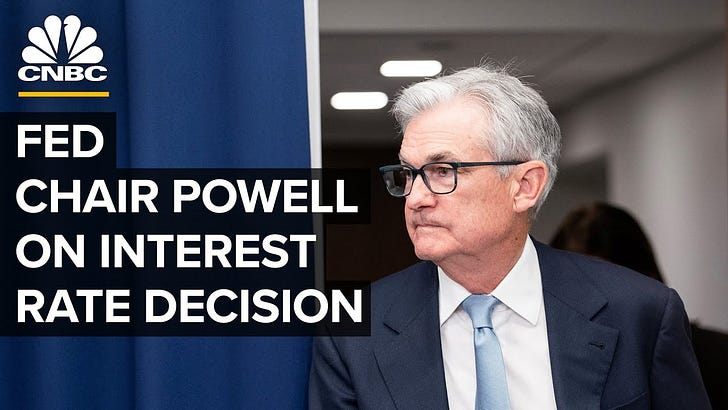FOMC announced another 0.25% rate hike after their May meeting this morning and the fed fund rate is now 5-5.25%, the highest since 2007 . It might be the last rate increase for this cycle as the language in the statement changed from
The Committee will closely monitor incoming information and assess the implications for monetary policy. The Committee anticipates that some additional policy firming may be appropriate in order to attain a stance of monetary policy that is sufficiently restrictive to return inflation to 2 percent over time.
in the last meeting to
The Committee will closely monitor incoming information and assess the implications for monetary policy. In determining the extent to which additional policy firming may be appropriate to return inflation to 2 percent over time, the Committee will take into account the cumulative tightening of monetary policy, the lags with which monetary policy affects economic activity and inflation, and economic and financial developments.
FOMC will also continue the quantitative tightening to shrink its balance sheet.
Overall, there’s no big surprise here. In the FOMC statement, it also said that The U.S. banking system is sound and resilient although First Republic Bank just failed this past weekend and the regional bank woes seem to worsen. Stocks for Pacific West Bank and Western Alliance Bank fell 50% and 22% after hours respectively. At this point, practically all the uninsured deposits will be backstopped by FDIC. The Fed won’t be able to justify not backstopping if there are more bank runs. But the question now becomes how many more rescues FDIC could afford after spending $20B on SVB, $13B on First Republic and $3B on Signature Bank? I hope tax payers won’t end up paying for the bank failures caused by the Fed’s prolonged ZIRP/QE policy and bank executive’s incentive to juice up short-term earnings so they can get paid enormous bonuses.



Found this link interesting.
128B or 1.27% reserve. The FDIC stops charging insurance fees when reserves hit 2-2.5%
By contrast the CDIC (Canadian equivalent) has reserves of 5-7% of total insured deposit base.
Banks forclosed so far have had 520B+ in assets. 128B would be 20% loss on assets.
Definitely hard to say if there are enough funds available or not.
The LOC, JPM got from the federal reserve for FRC to take on its assets was 50B (probably more market risk management than needed). At least 13B in write downs on FRC (10% of the reserves). They seemed to have mostly Real Estate and treasury assets.
SVBs loan book seemed to be much less healthy than FRC. Something like 15-20% of its loans where early stage tech with high yields + warrant coverage. These where kinda like junk bond loans in terms of target yields and expected default rate. A core assumption in their lending model seemed to be that VCs would keep writing cheques for their non profitable portfolio companies so that debt would get serviced in perpetuity. So I assume loss from SVB will be much larger.
Have a look at office vacancy rates vs last commercial real estate crisis in the 1990s. There are unfortunately alot more mark to market losses coming on loans that both large and small banks have made with interest rates at these levels.
Banks are very slow to mark assets to market. And there is a significant lack of transparency in terms of what assets they actually own. Alot of these RE assets only get marked down when they get sold and the bank incurs a loss. The HTM losses where known on balance sheets where these are all unknown for investors.
Gonna be very interesting as this unfolds. Likely more slowly over the next year or so, but I have definitely been surprised of the pace so far.
https://www.fdic.gov/news/press-releases/2023/pr23013.html#:~:text=FDIC%2DInsured%20Institutions%20Reported%20Net,Billion%20in%20Fourth%20Quarter%202022